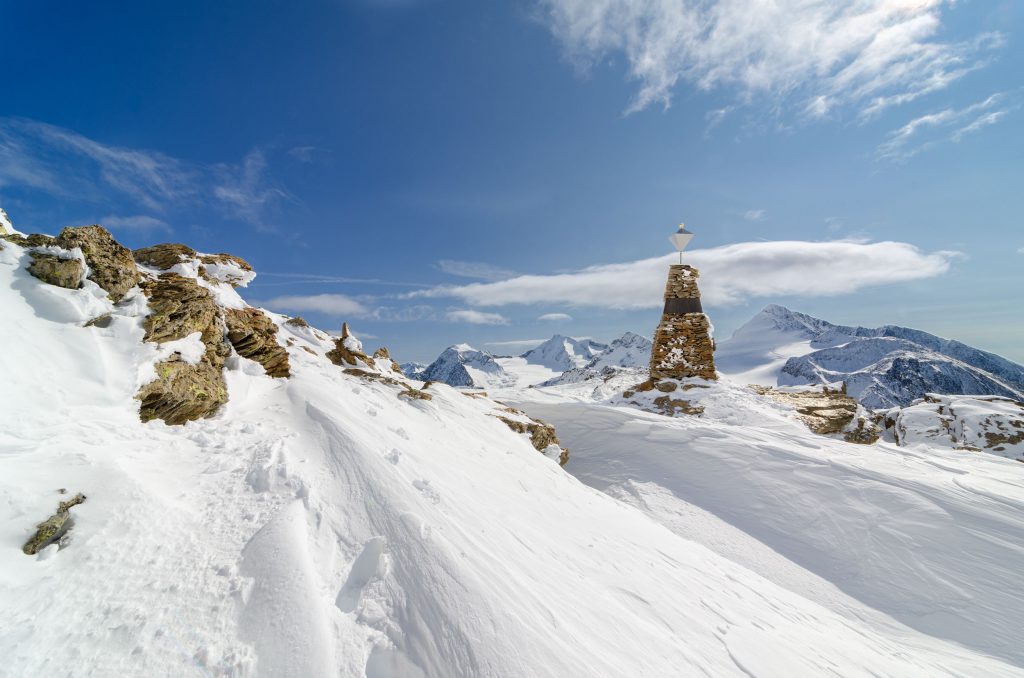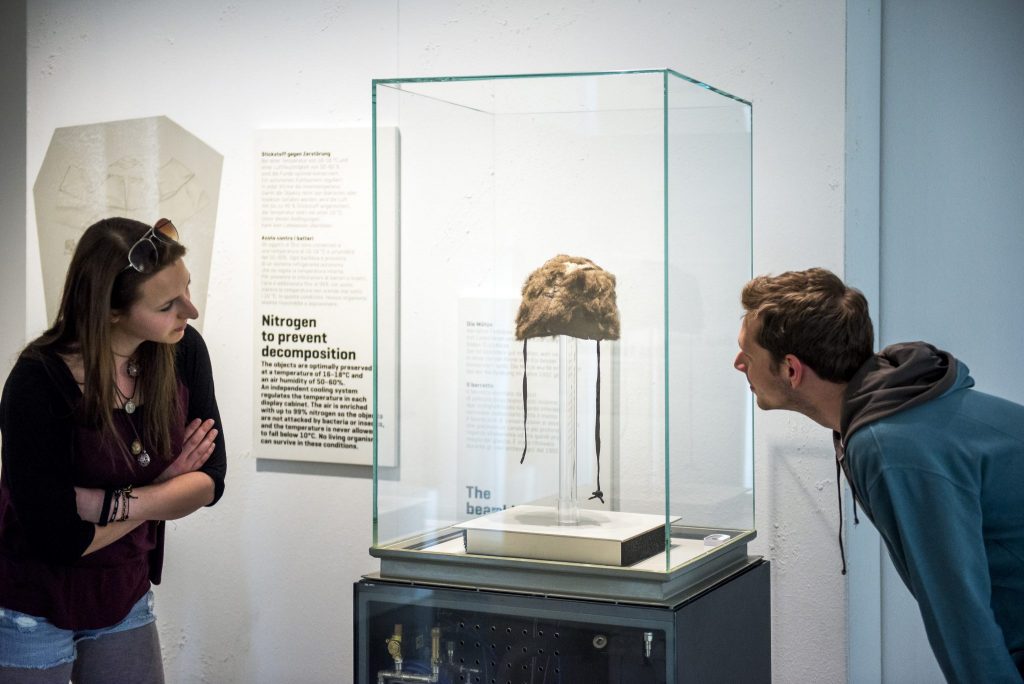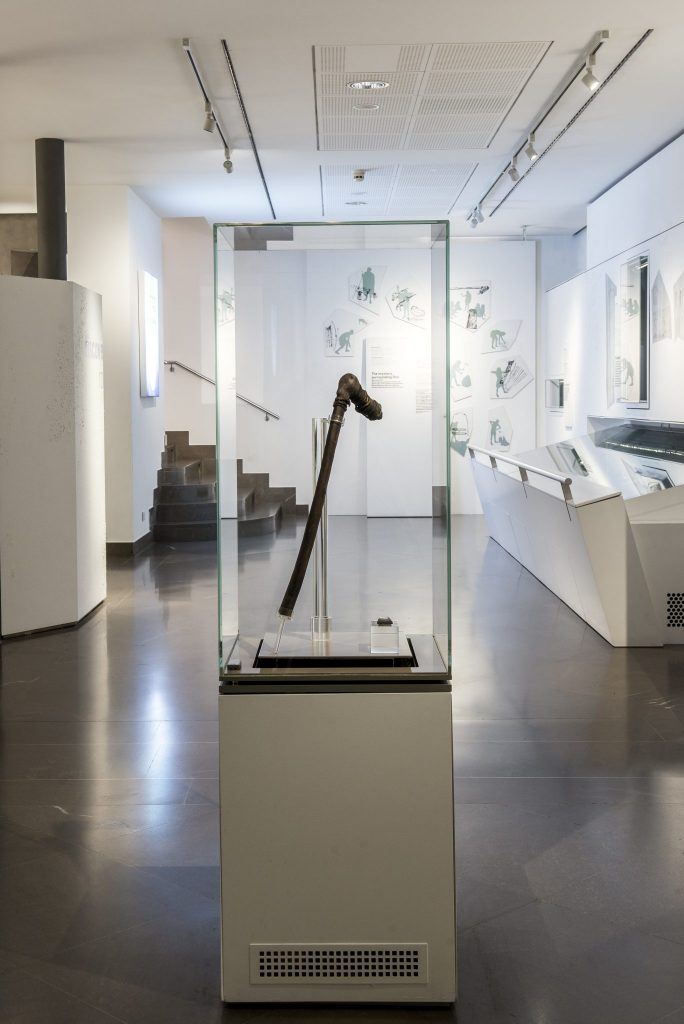Ötzi, the Iceman, is certainly the symbolic image of the Archaeological Museum of South Tyrol, a Bolzano. An important exhibition space dedicated to the archeology of the southern Alps and in particular to Ötzi, the man found by chance by a couple of hikers in 1991, just thirty years ago, with his clothes and all his mummified and frozen equipment. Over 5300 years ago this man had climbed the Val Senales glacier to its frozen peaks and died here.. The mummy and the objects that belonged to it since 1998 are exhibited to the public in this museum which, since 2013, has dedicated three of its floors permanently to the theme "Iceman". The fourth floor houses the archeology of South Tyrol, with exhibition themes that vary periodically.
Ötzi: of his existence and his death we only know because it took place in the midst of the glaciers of the Alps. Where his body and what he had with him at that moment was naturally preserved. A sensational archaeological discovery. A unique window on the life of men in the Copper Age, an era that can be framed in the final phase of Neolithic. Just to get an idea of what we are talking about, this mummy is older than the pyramids of Egypt and even Stonehenge.
From the Neolithic to the present day thanks to the glaciers that have preserved the body
Considered one of the most famous mummies in the world and most important for its great scientific value, Ötzi owes this name to a journalist, who combined it with the place where it was found in the Ötztal Alps. Its official definition is "Iceman". But it is also known as Similaun mummy, from the mountain near which the discovery was made. His existence would have been completely anonymous and ignored, lost in the mists of time, if fate hadn't wanted his death to take place right in the middle of the alpine glaciers. And if the two German hikers hadn't discovered it by chance on 19 September 1991.

The recovery of the mummy was not immediate due to adverse weather conditions. He was a great mountaineer who a few days later passed right there, Reinhold Messner, to hypothesize a very ancient age for the dead. During the recovery of the body, which was first brought to the Innsbruk Institute of Forensic Medicine, numerous other findings were brought to light that can be related in some way to Ötzi. Remnants of leather, a perfectly preserved fur cap, birch bark, tufts of grass. The finding that it was a prehistoric mummy occurred within a few days. As was immediately clear the need to keep the find in a cold room. It was necessary to artificially recreate the conditions that had preserved it so well for so many millennia.
Ötzi, a 45-year-old hunter shot by an arrow while crossing the Alps between Austria and Italy
Who was Ötzi? Perhaps a merchant since he was on the pass of an important Alpine ridge. Certainly a hunter like almost all the men of his time who lived in that area. Experts inform us that in life he was probably six feet tall and weighed about fifty kilos. Dark eyes and hair, he was about 45 at the time of death. A very advanced age at the time. He died, it is assumed, following an attack. In 2001, thanks to an X-ray, a flint arrowhead was discovered in his left shoulder. And perhaps by falling, or by a second blow, he also got a bad head wound.

Among the numerous objects found where the mummy was found, also a dagger with wooden handle and flint blade. This is also an extraordinary find: it is in fact the only dagger from the Copper Age that has survived intact to us. Today, thirty years after its sensational discovery, the mummy is kept inside a cold room specially designed to best reproduce the conditions of the glacier. The body currently weighs around 13 kg and is one meter 54 centimeters long. It is placed on a precision balance, in an environment with a constant temperature of -6 ° C and with a humidity of 99%.

It is visible to the public through a small opening. Very sophisticated technologies allow constant monitoring of this mummy which, as underlined by the South Tyrolean Archaeological Museum in Bolzano, from an extraordinary archaeological find, over the years has become a great media star, a fundamental object of research, an exceptional museum exhibit.
A weekend dedicated to archeology and a temporary exhibition to commemorate the thirty years since the discovery of Ötzi
To commemorate the thirty years since its discovery, scheduled for 18-19 September next, on the Talvera meadows in Bolzano, a weekend dedicated to archeology on the subject Working the flint as in the days of Ötzi. To understand how this stone has been a vitally important raw material for millennia. By participating in the event, young and old will learn how to transform flint into razor sharp blades. From 23 November 2021 to 7 November 2022in addition, the temporary exhibition Stone Age Connections. Mobility in Ötzi's time. Through important artifacts found in the Alps, the exhibition will try to understand the routes and trade relations in the fourth and third millennium BC.
For more images of Similaun's mummy, the Museum points to the web page http://www.icemanphotoscan.eu/
Photo source in evidence Examination of the mummy (© Archaeological Museum of South Tyrol
/ EURAC / Samadelli / Staschitz)





